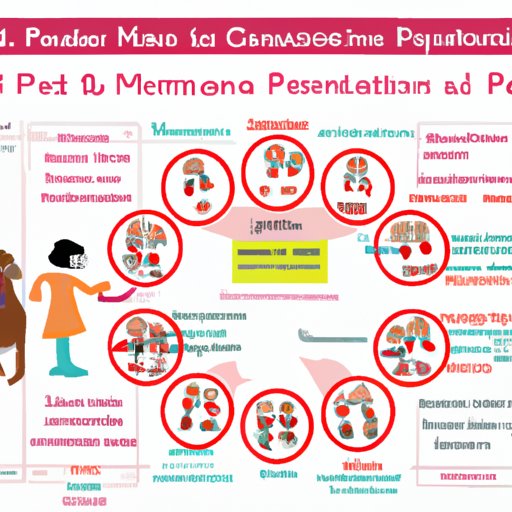If you’re a caregiver for a furry friend, you’ve probably wondered about their reproductive cycle, particularly if you have an unspayed female. Let’s dive into the world of canine estrus, more commonly known as a dog’s period, and unravel the mysteries of their cycle.
H2: Understanding Canine Estrus
Firstly, it’s important to note that dogs don’t menstruate in the same way human females do. They have an estrus cycle, which is quite different from the menstrual cycle. The estrus cycle lasts about six months, but the “period” part, or bleeding, typically lasts between 10-14 days.
Here’s a brief overview of the stages of the canine estrus cycle:
- Proestrus: This stage lasts for about 9 days. Your dog might exhibit swelling in the vulva, and you might notice a bloody discharge.
- Estrus: Lasts for 9 days but can range from 4-24 days. Your dog is fertile during this stage, and the discharge changes from bloody to straw-colored.
- Diestrus: This stage is the period after the estrus. It lasts for about two months.
- Anestrus: This is the resting stage where no sexual activity occurs, and it lasts for about four to five months.
H2: Signs Your Dog is in Heat
Since dogs can’t communicate verbally, it’s essential to recognize the physical and behavioral signs that your dog is in heat. These might include:
- Swelling of the vulva
- Bloody or straw-colored discharge from the vulva
- Excessive licking of the genital area
- Agitated, nervous, or aggressive behavior
- Frequent urination
- Attractiveness to male dogs
H2: How to Handle Your Dog’s Cycle
During your dog’s heat cycle, she may be uncomfortable or agitated. Here are a few tips to make her feel better:
- Keep her indoors: This will prevent unwanted pregnancies and protect her from male dogs who may become aggressive.
- Use doggie diapers: These can help manage the bleeding and keep your home clean.
- Provide extra comfort: Extra cuddles and a comfortable bed can help soothe her.
H2: Spaying Your Dog
To avoid the challenges associated with the heat cycle, many dog owners choose to have their female dogs spayed. Spaying not only prevents unwanted pregnancies but also eliminates the risk of certain health problems.
| Pros | Cons | |
|---|---|---|
| Spaying | Prevents unwanted pregnancies, Eliminates heat cycles, Reduces risk of certain cancers | Surgical procedure with associated risks, Can lead to weight gain, Changes in coat texture |
H2: FAQ
Q: How often do dogs go into heat?
A: On average, dogs go into heat twice a year, but this can vary based on breed and individual dog.
Q: Can I spay my dog while she’s in heat?
A: While it’s possible, it’s generally safer to wait until the heat cycle has ended.
Q: How can I tell if my dog is in heat?
A: Look for signs like a swollen vulva, change in behavior, and a bloody or straw-colored discharge.
Q: Can dogs get pregnant during their first heat?
A: Yes, dogs can get pregnant during their first heat, although it’s not recommended due to their young age.
In conclusion, understanding your dog’s estrus cycle can help you better care for her and address her needs during this time. Remember, every dog is unique, so these experiences may vary. Always consult with your vet if you have any concerns.



